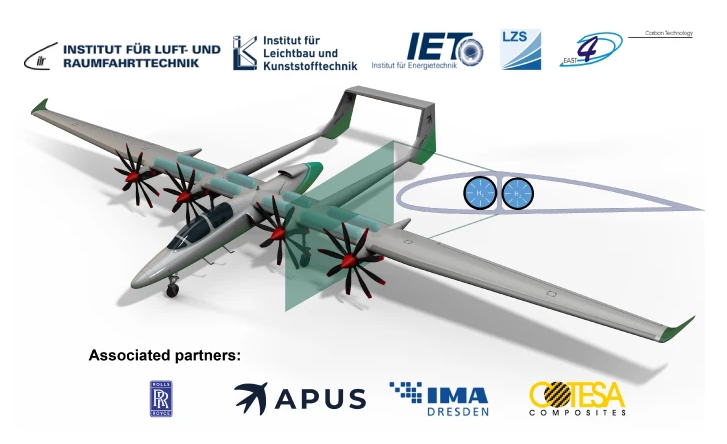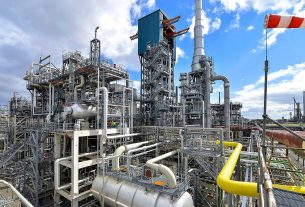Germany – Another joint endeavor in the area of hydrogen-powered flight has begun with the SAB project “System-integrated H2 pressure tank assemblies for general aviation and feeder aircraft” (SaxonHy).
The hybrid-electric experimental aircraft APUS i-5 “H,” which has been created and manufactured by the associated project partners Rolls-Royce Deutschland and APUS – Aeronautical Engineering GmbH since 2019, incorporates it into a wide range of research initiatives. As part of SaxonHy, the Leichtbau-Zentrum Sachsen and EAST-4D Carbon Technology are collaborating with the Institute of Lightweight Engineering and Polymer Technology (ILK), the Institute of Aerospace Engineering (ILR), and the Institute of Power Engineering (IET) of the TU Dresden to integrate the hydrogen-based experimental vehicle APUS i-5 “H”Hydro into the modular platform APUS i-5 “H.” In order to achieve this goal, the associated partners COTESA and IMA Materialforschung und Anwendungstechnik are also involved. They offer their knowledge of aerospace manufacturing and complex hydrogen system verification.
Storage issues
The storage of hydrogen is one of the major problems with hydrogen-powered flight. Because hydrogen has a lower volumetric energy density than kerosene, it takes up a lot of room and can increase system weight. Therefore, it is imperative to make the best use of the installation space available, which necessitates a very high level of interdependence between the various subsystems, such as the support structures, control structures, and safety systems. As a result, difficult, interactive development processes result.
The SaxonHy project’s planned work will use the illustration of an H2 pressure tank assembly built into a small plane’s center wing. For this assembly, a system model will be created as a foundation for the design and integration of the tank. An excellent design for the H2 pressure tank assembly is sought after while taking into account the specific requirements. In order to increase the gravimetric storage density, it will be examined whether a tank system can be implemented without a plastic liner. In order to develop a certification concept for hydrogen tanks as part of SaxonHy, the designed pressure tank must then be manufactured for aviation and tested under pressure and maneuvering loads in specially developed system tests.




